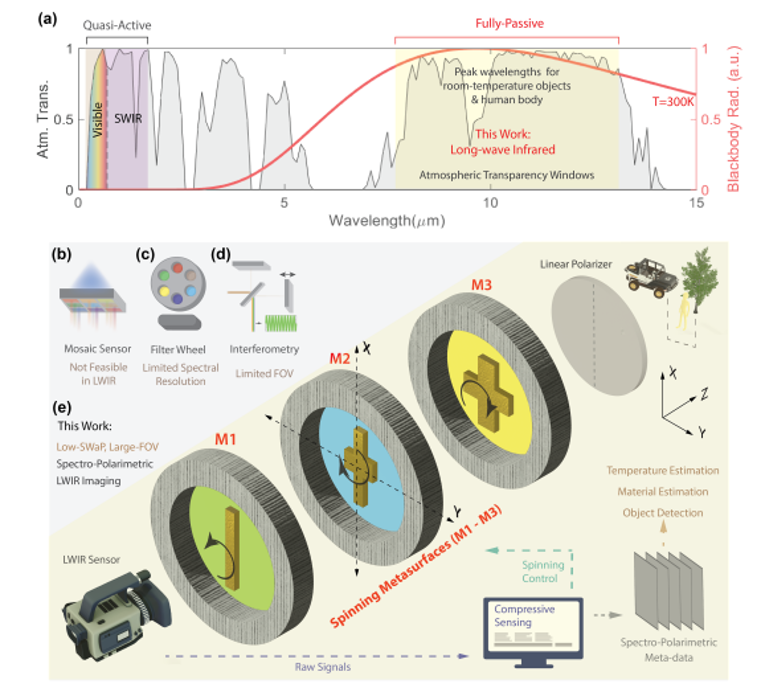Spectro-polarimetric imaging in the long-wave infrared (LWIR) region plays a crucial role in applications from night vision and machine perception to trace gas sensing and thermography. However, the current generation of spectro-polarimetric LWIR imagers suffers from limitations in size, spectral resolution, and field of view (FOV). While meta-optics-based strategies for spectro-polarimetric imaging have been explored in the visible spectrum, their potential for thermal imaging remains largely unexplored. In this work, we introduce an approach for spectro-polarimetric decomposition by combining large-area stacked meta-optical devices with advanced computational imaging algorithms. The co-design of a stack of spinning dispersive metasurfaces along with compressive sensing and dictionary learning algorithms allows simultaneous spectral and polarimetric resolution without the need for bulky filter wheels or interferometers. Our spinning-metasurface-based spectro-polarimetric stack is compact (<10×10×10cm<10×10×10cm) and robust, and it offers a wide field of view (20.5°). We show that the spectral resolving power of our system substantially enhances performance in machine learning tasks such as material classification, a challenge for conventional panchromatic thermal cameras. Our approach represents a significant advance in the field of thermal imaging for a wide range of applications including heat-assisted detection and ranging (HADAR).

Xueji Wang, Ziyi Yang, Fanglin Bao, Tyler Sentz, and Zubin Jacob, "Spinning metasurface stack for spectro-polarimetric thermal imaging," Optica 11, 73-80 (2024)